Ashura 2014 in Nabatiyeh, Lebanon
-
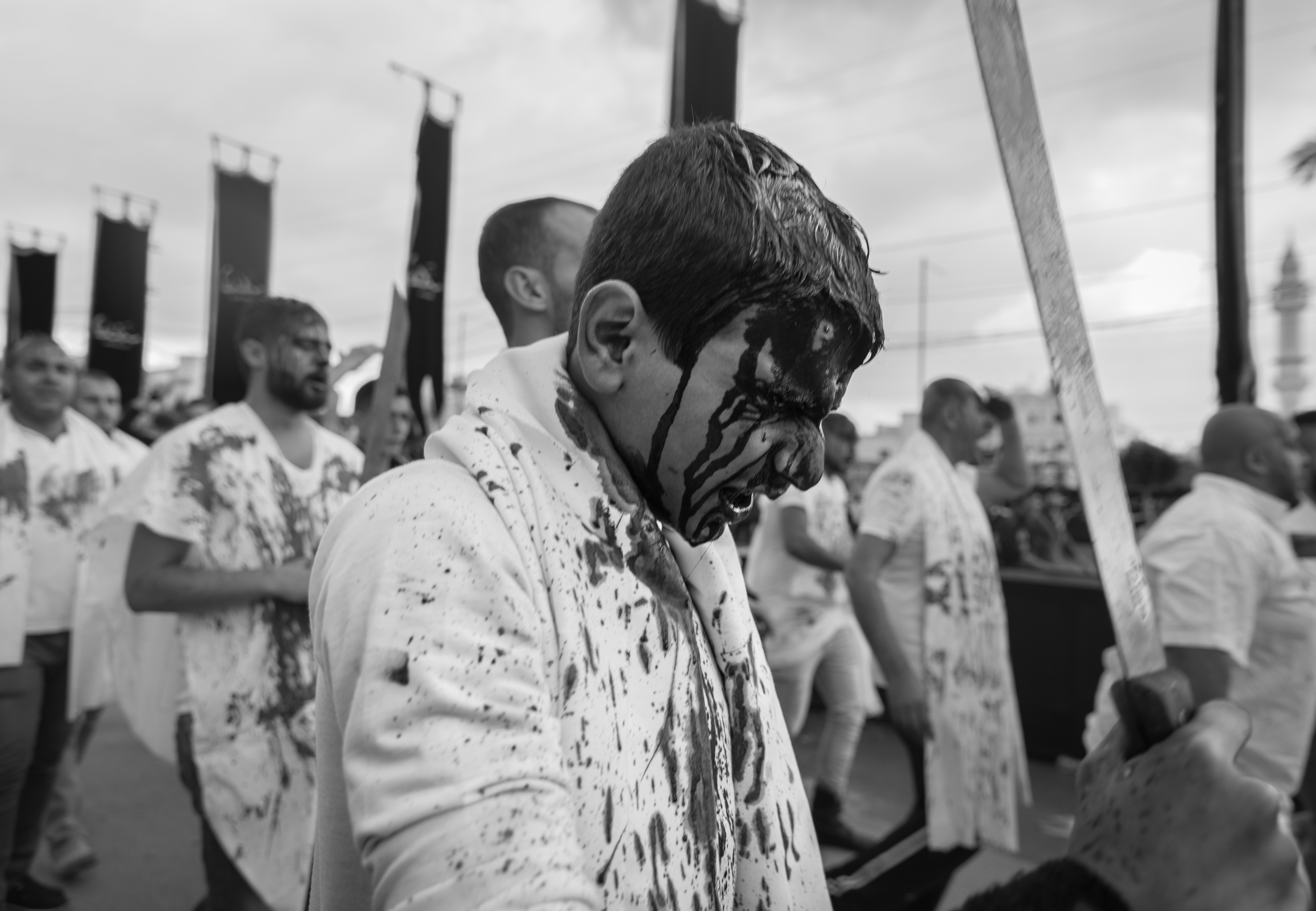
As pictured here, groups of tatbir practitioners take to the streets, pounding their foreheads for hours. A re-enactment of Karbala, the ta'ziyeh, is also performed. Together, ta'ziyeh and tatbir embody the two meanings of Ashura: homage to the memory of Hussein's martyrdom at Karbala and atonement for failing to come to his aid. -

Under a poster of Hezbollah's leader, Hassan Nasrallah, young men fervently pound their bare chests chanting "haidar" (a name for Imam Hussein) and the names of his kin who sacrificed themselves at Karbala. Nasrallah made a rare appearance in the Shia suburbs of Beirut the night before Ashura, calling on supporters to renew their vow to Hussein, who stood alone before an army of 30,000 on the day of Karbala. -
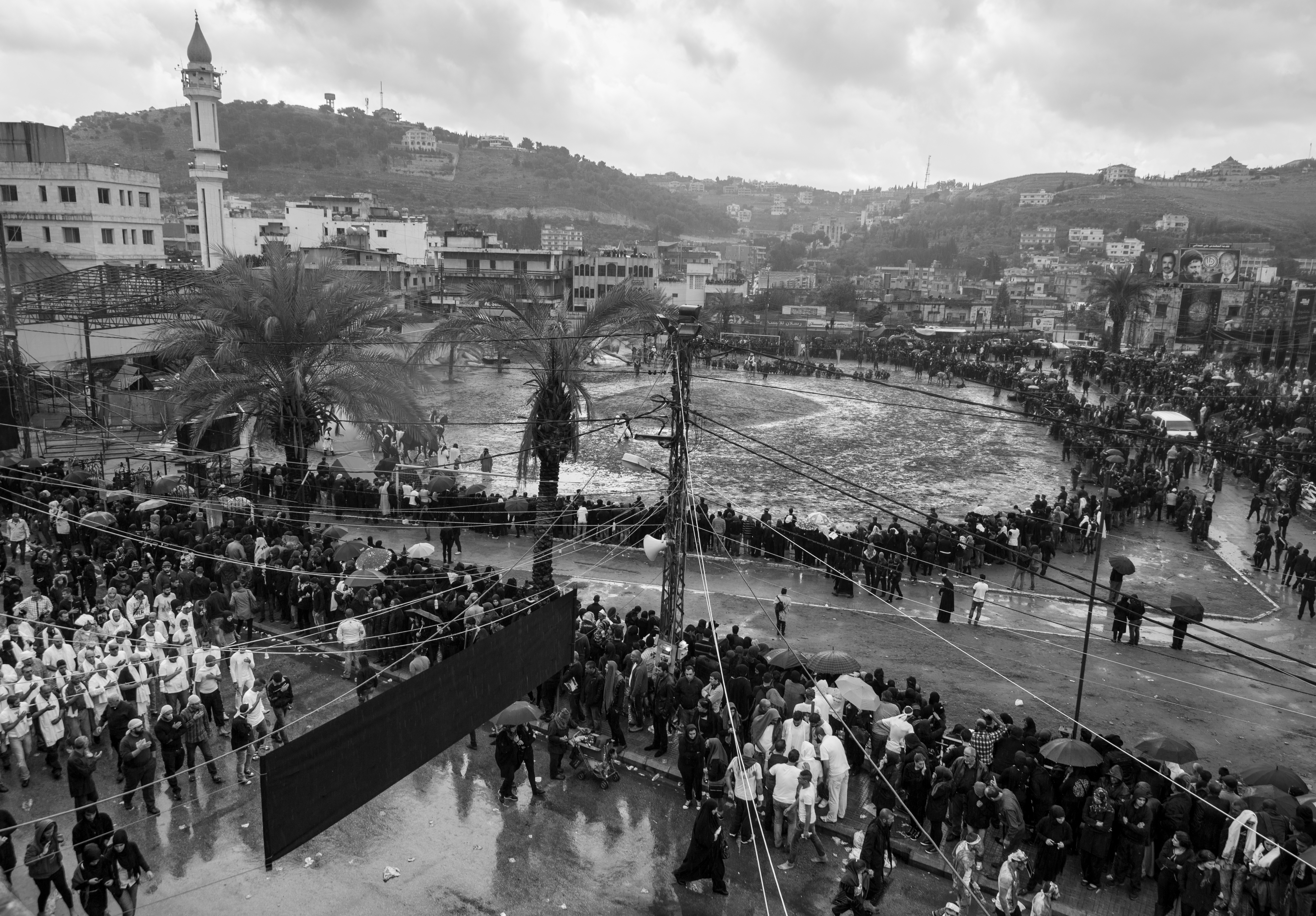
The bloodletting processions circle the area where the ta'ziyeh is performed. The psychology of Shia politics is profoundly influenced by the story of Hussein. In Lebanon, Nasrallah's discourse "to stand firm before the enemy army" is a direct reference to Hezbollah's military intervention in Syria. While Karbala has always been linked to resistance to Israel in southern Lebanon, the Shia now draw a link between it and their struggle against Sunni opponents in various Syrian opposition groups. -
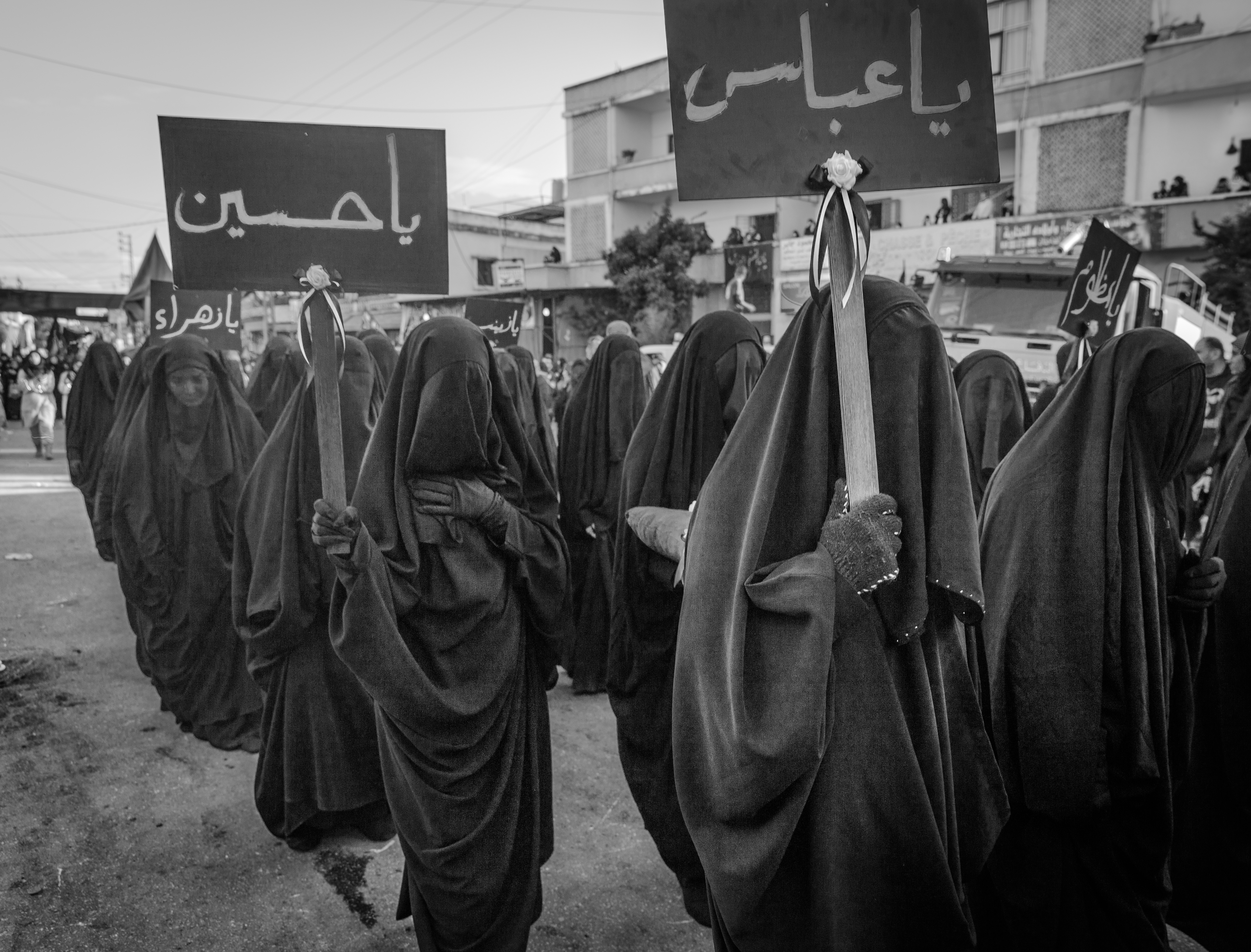
Shia women dressed as members of Hussein's family carry signs with the names of Ali and Hussein through the streets. Although women don't often take part in the bloodletting rituals, they play an important role in the 10-day commemoration rites leading up to the day of Ashura. Clad in a funereal black, women attend nightly lamentation assemblies where religious specialists give talks on Shia history, where they sob and wail. -
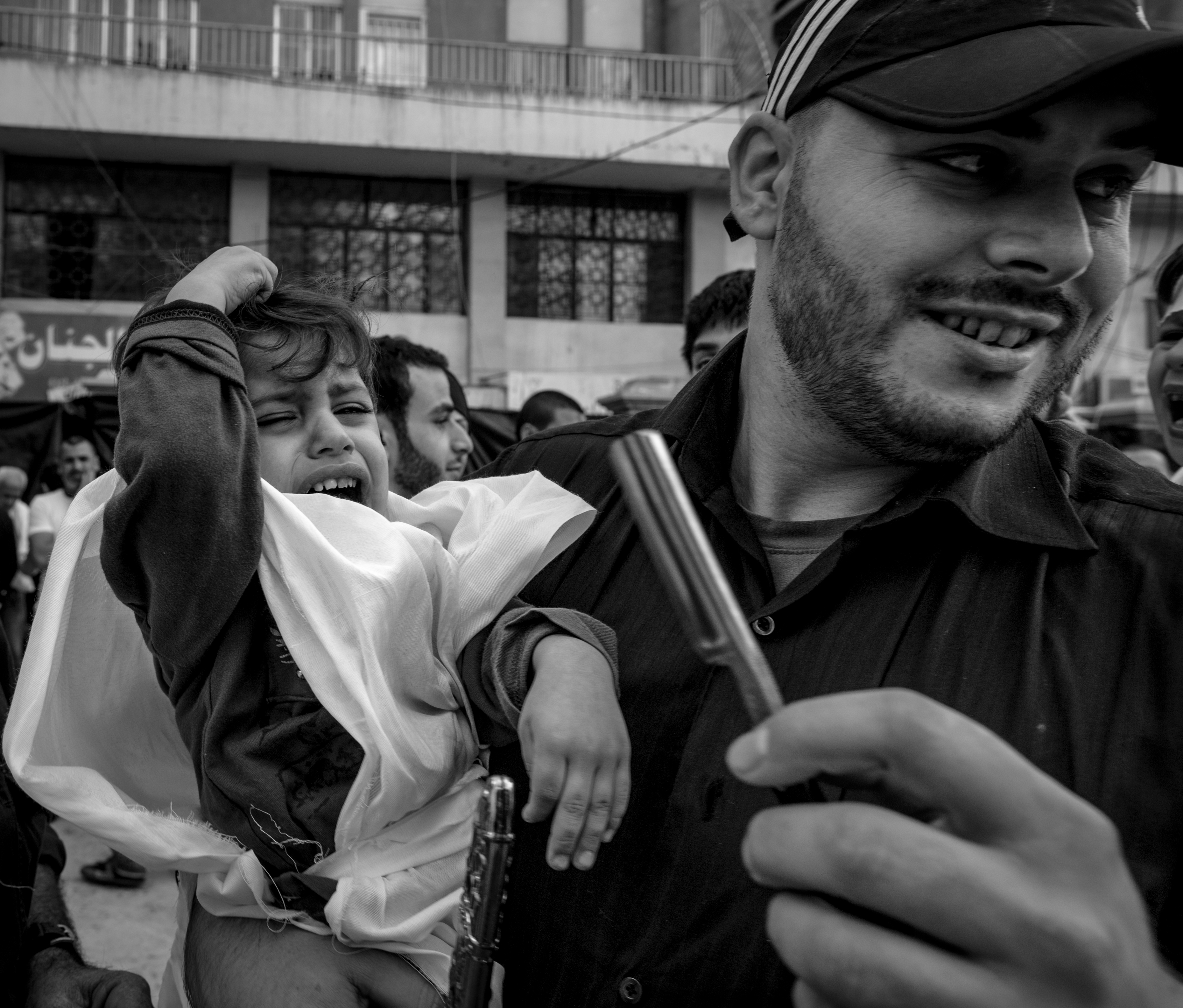
In the Husseiniyya, where the tatbir begins, children resist having their foreheads cut. Children from as young as 3 months have their heads cut; parents believe it serves as a life vaccination from Hussein. The superficial inch-long cut is usually made by relatives or specialists with a razor blade. No serious injury is therefore inflicted, though due to the high number of veins in the forehead, there is a strong flow of blood. Medical teams are stationed around Nabatiyeh just in case. -
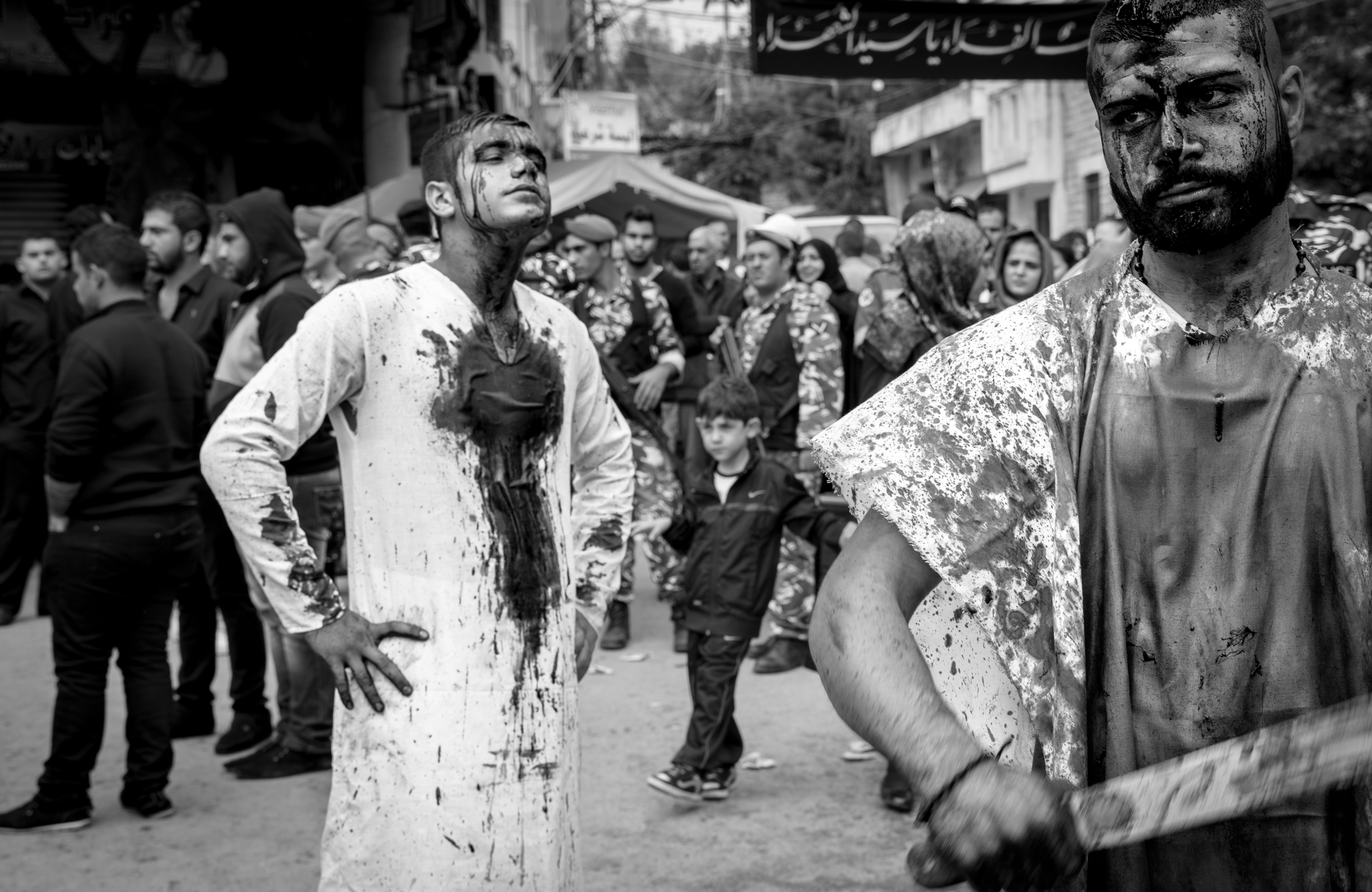
Participants usually thump the top of their heads to generate a constant stream of blood that stains their white outfits. Two men, drenched in blood, stand apart from the processions for a moment in a trance-like state, as Lebanese Army soldiers control the crowds behind. -

When the tatbir groups have completed their rounds at the end of the morning, the Husseiniyya is drenched in blood. This year, it rained on Ashura, which helped clean the streets, but which also filled them with rivers and puddles of blood. -
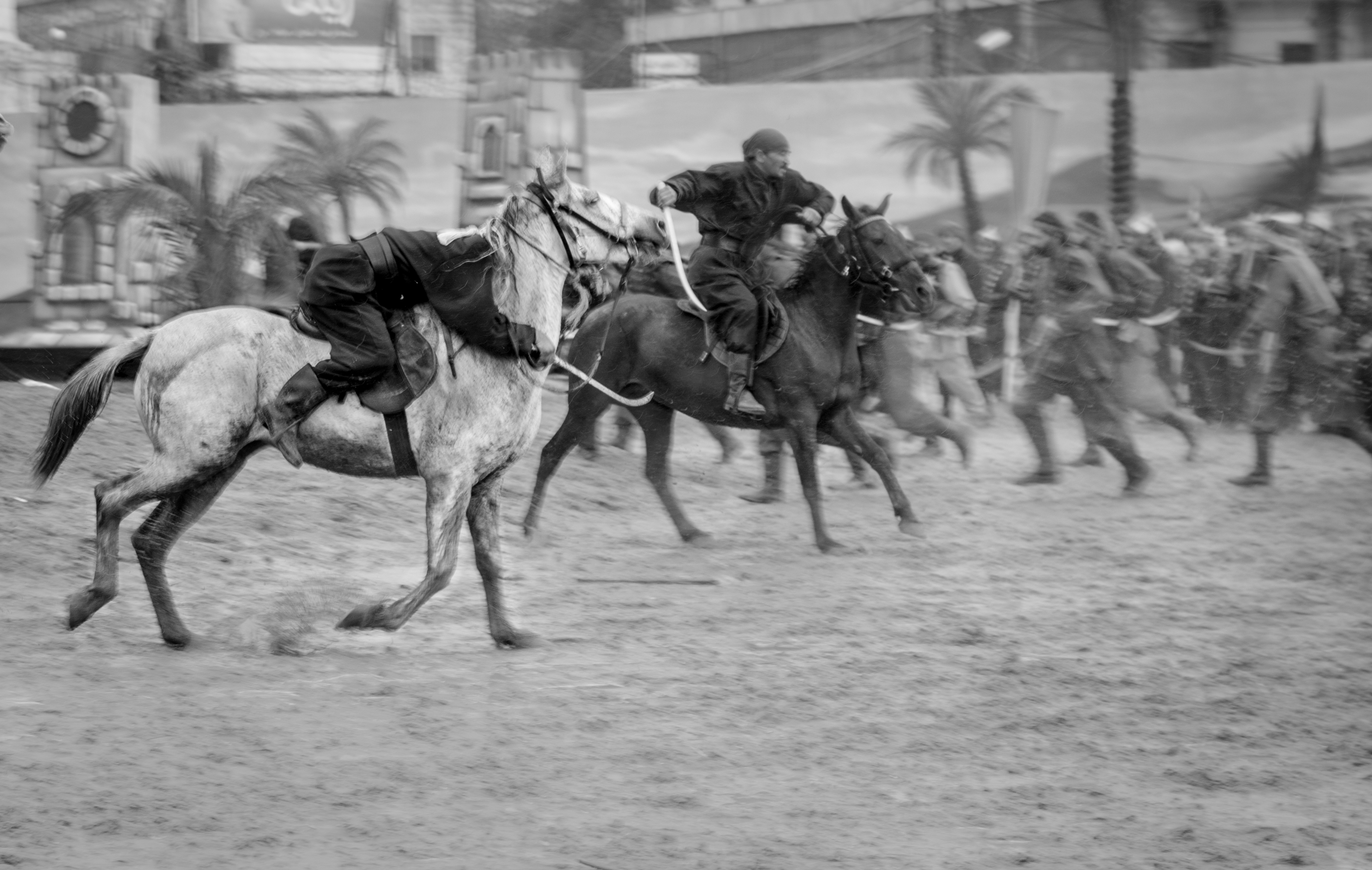
The ta'ziyeh features professional actors, horses and elaborate costumes. For ten days, the Ummayad army dispatched from Damascus had besieged Hussein's encampment at Karbala and undertook a nearly wholesale slaughter of the members of Prophet Muhammad's family. Such a decisive moment in history, immortalised over a thousand years later in plays such as these, continue to inform civil wars and Shia-Sunni fault lines in the region. -
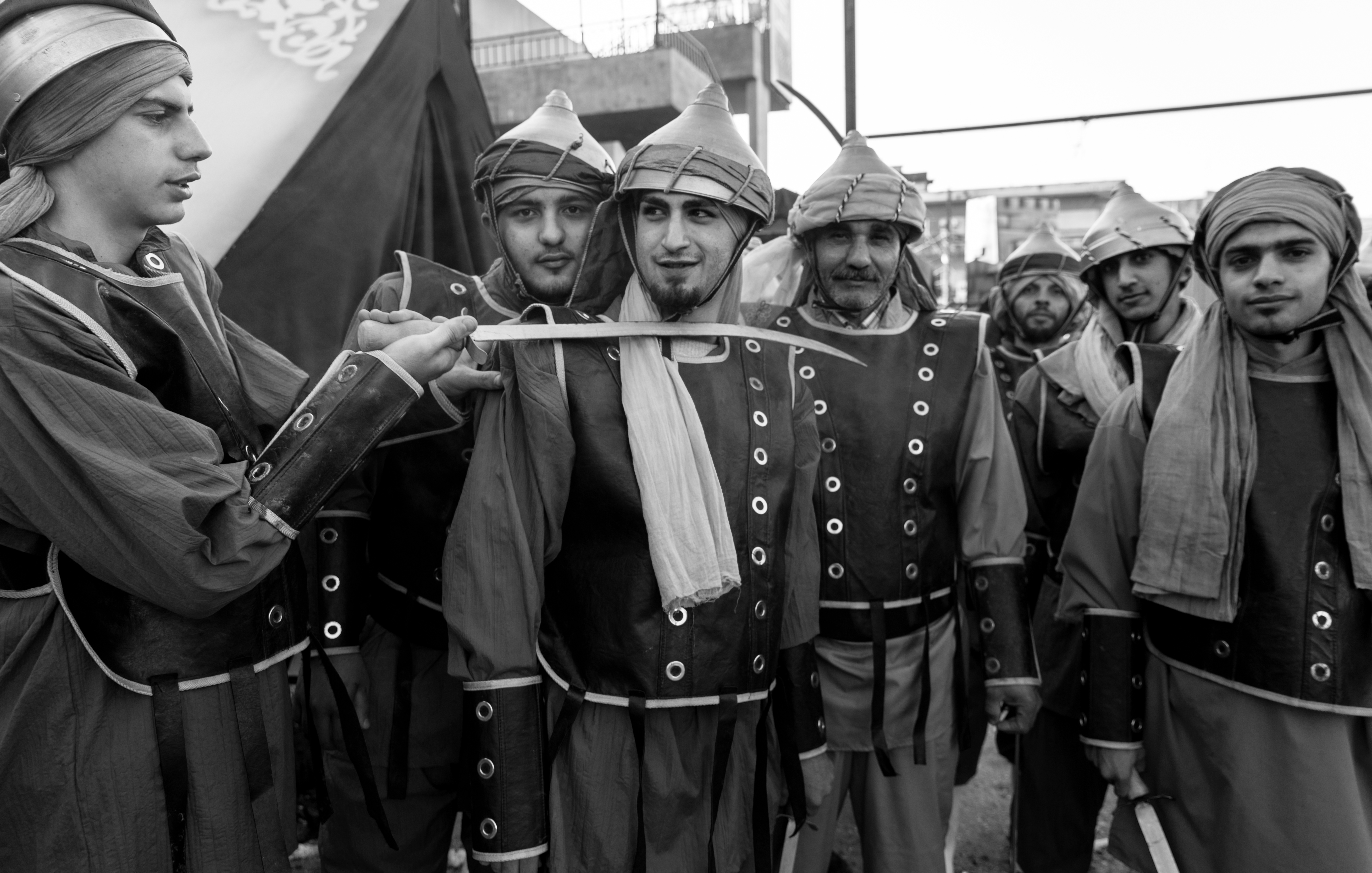
Actors from the re-enactment of Karbala gather backstage before the performance. These men play the role of the Sunni Ummayad forces who fought Hussein's army at Karbala and eventually slayed him, and jokingly refer to themselves as today's "Da'esh" or ISIS with the beheading gesture.
https://qantara.de./en/node/35110
Link
To all image galleries
